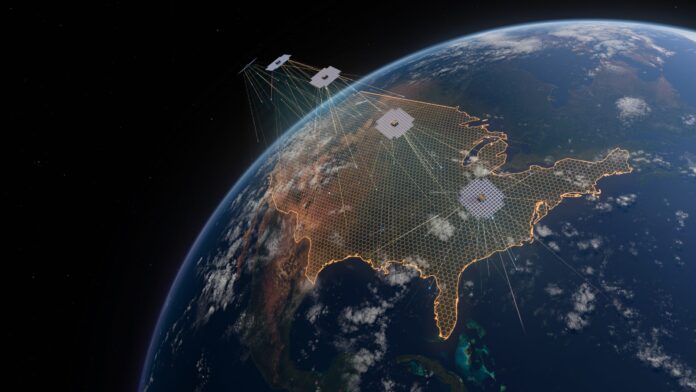AST SpaceMobile supported live NTN video calls for Verizon, AT&T via its new Bluebird LEO satellites
Verizon said that it has successfully completed its first Non-Terrestrial Network (NTN) live video call between a device on its terrestrial cellular network and one connected via an AST SpaceMobile satellite.
Meanwhile, AT&T also announced this morning that AST has supported another video call over its network via a regular smartphone. The carrier said that nearly half of AT&T customers already have access to peer-to-peer messaging and emergency satellite services.
AT&T did its first video call with AST in June of 2023, prior to the launch of AST’s newest satellites. This time, AST SpaceMobile initiated the live NTN video call from Midland, Texas, according to AT&T, which called it “one small step for man, but one giant connection for mankind.”
Hans Vestberg, chairman and CEO of Verizon, commented on Verizon’s NTN video call, saying: “This breakthrough marks a new era in cellular to satellite connectivity in the United States that enables seamless data transmissions – not just texts – in the rare instance a terrestrial cellular network is not available. Adding this layer of ability—not only to text someone, but to be able to call, video chat, or send files—whether in the wilderness, or in a remote part of a lake community, will only enhance the reliability of our customers’ connectivity and communication experience.”
Other cellular network providers and device manufacturers including T-Mobile US, Vodafone, Apple and Google have been testing and prepping new NTN services in the past few months, with some options set to go commercial this year. (T-Mobile US just launched its beta NTN service with Starlink earlier this month.)
In addition to being a customer of, and investor in, AST SpaceMobile, Verizon also has a relationship with NTN connectivity provider Skylo for satellite-based, direct-to-device messaging outside of its network footprint. (Verizon and Skylo are also researching the development of satellite IoT technology and have conducted a proof-of-concept demonstrating the roaming capability of a Verizon-enabled IoT cellular device across both the mobile carrier’s cellular network and Skylo’s satellite network.)

“Our team has worked tirelessly to develop a satellite to device data connection for consumers to power their lives,” said Joe Russo, EVP and president of global network and technology for Verizon. “We are relentlessly focused on providing the most reliable network experience for our customers where they live, work and play, and providing this added layer of reliability is another reason our customers trust us to keep them connected wherever life takes them.”
AST SpaceMobile received permission from the Federal Communications Commission earlier this month to begin testing of its five new Bluebird satellites in low Earth orbit (LEO), which were launched in October 2024. The satellites, whose beams are designed to support a capacity of up to 40 MHz and deliver peak data transmission speeds of up to 120 Mbps, are expected to support non-continuous cellular broadband service across parts of the U.S. and are compatible with unmodified AT&T and Verizon smartphones.
AST SpaceMobile has said previously that the goal is to provide approximately 100% nationwide coverage from space with more than 5,600 coverage cells. The company is working with both Verizon and AT&T in the United States. Verizon has made a $100 million commitment to AST SpaceMobile, which comprises $65 million in commercial prepayments plus $35 million of convertible notes, plus use of the company’s 850 MHz spectrum.
In related news, Vodafone—another investor and customer of AST SpaceMobile—last week announced a research hub dedicated to the enablement of seamless switching between LEO space-based and land mobile broadband services. The project is supported by an initial grant from the Spanish Space Agency, and the telco has tapped AST SpaceMobile and the University of Málaga (UMA) as lead partners, with other third-party technology companies and developers invited to join.
The emphasis for the hub will be on the design, testing and validation of new, open source hardware, software and processing chips that can work interchangeably in both space and terrestrial networks, Vodafone noted, adding that it will be home to space-to-land gateway, like the one the telco used for its January space direct-to-device video call, an achievement it called a world-first. Vodafone’s partners, as well as other operators, will be able to use this gateway to test and validate their own services connected to AST SpaceMobile’s BlueBird satellites before introducing them to the market.

